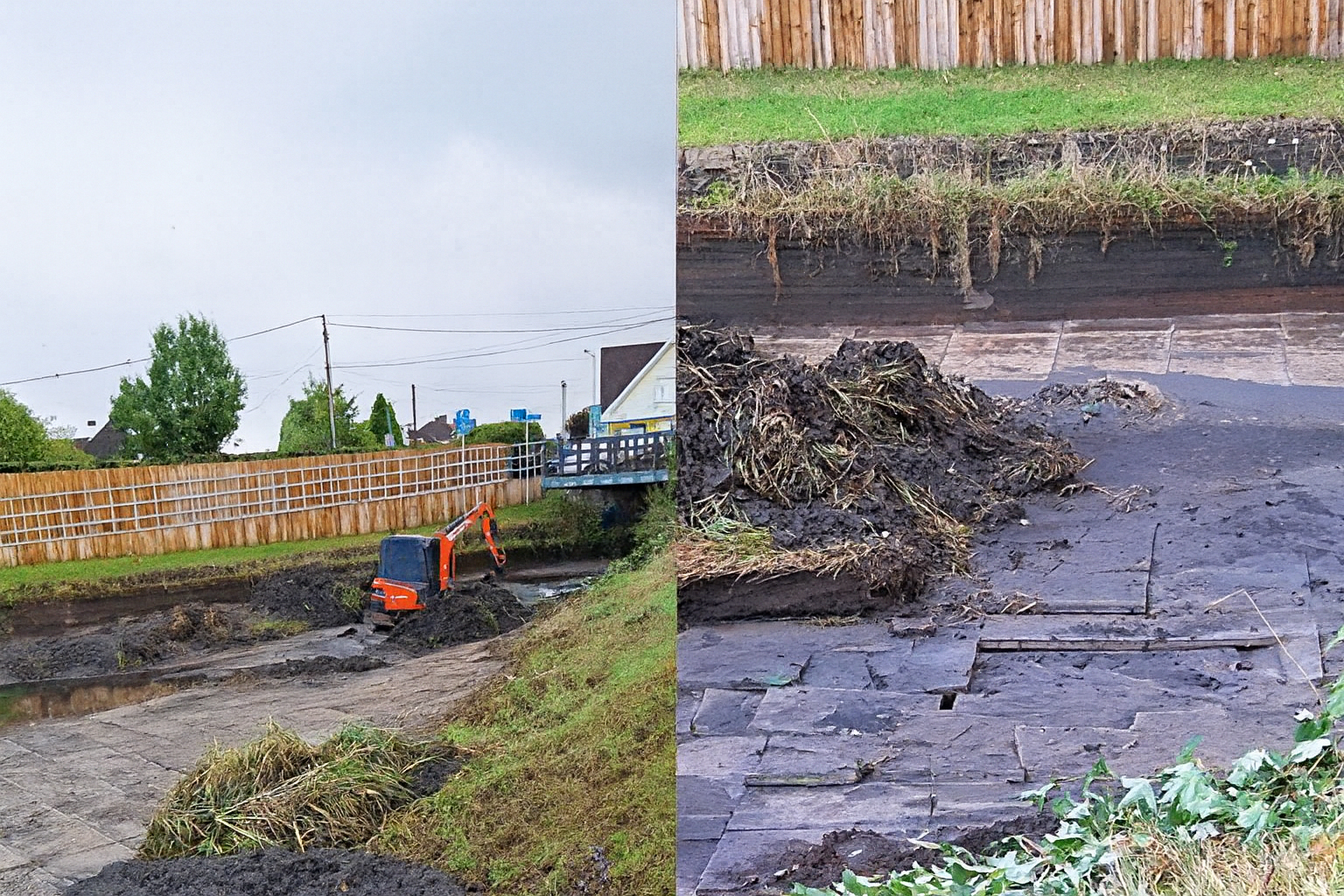Restoration work on the historic Cefn Flight in Monmouthshire, Wales, has been halted following the discovery of possible Roman bathing structures.
Cefn Flight is a series of locks constructed in 1799 in the Crumlin arm of the Monmouthshire Canal at Rogerstone. Raising the water an impressive 50 metres over a stretch of just 740 metres, the Cefn Flight is regarded as one of the steepest canal rises anywhere in the UK
Restoration works on Cefn Flight has led to the discovery of stone-lined symmetrical structures hidden beneath layers of silt and mud, which preliminary studies suggest could be Roman bathing structures.
Heritage authorities have stepped in to assess the site, which already carries Scheduled Monument status (MM184) for its 18th-century lock flight. “We are aware of consented works taking place at Fourteen Locks, Monmouthshire. There is a requirement for finds to be reported, and we look forward to finding out more about any discoveries in due course,” said a government official.
While full archaeological verification is pending, it is possible that the structures relate to Roman activity in South Wales centred on Caerleon (Isca Augusta), a major legionary fortress located just six miles away.
Roman bathhouses were a common feature of both military bases and civilian communities, often serving not only as places for washing but also as social and political hubs.
If the structures prove to be Roman, they could suggest the presence of a previously undocumented villa or waystation linked to Caerleon. Such a discovery would expand understanding of Roman infrastructure in the Gwent valleys, highlighting how far imperial influence may have extended into the region’s rural landscapes.
Header Image Credit : Paul Harris
Sources : South Wales Argus





